Best
Overall Digital Piano
-
Overall: The Keyboard Has 88 Weighted Keys With Graded Hammer Standard (GHS) To Make It Feel Like Playing A Real Piano
-
Best Feature: Yamaha's Pure CF Sound Engine For High-Quality Sound Reproduction
-
TedScore™: 9/10
Best
Student Digital
Piano
-
Overall: includes the Yamaha Education Suite which offers a set of learning tools and lessons
-
Best Feature: Has an aux line input that allows users to connect external audio devices
-
TedScore™: 10/10
Best
Affordable
Digital
Piano
PIANO
-
Overall: Built-in Dance Music Mode that includes 50 built-in dance music rhythms
-
Best Feature: Features a step-up lesson system that helps beginners learn to play
-
TedScore™: 9/10
In the world of keyboards and digital pianos, the age-old debate between Casio or Yamaha has long intrigued musicians, both budding and seasoned.
Having personally explored both brands, there’s no one-size-fits-all answer. What truly matters is aligning your choice with your budget and playing goals.
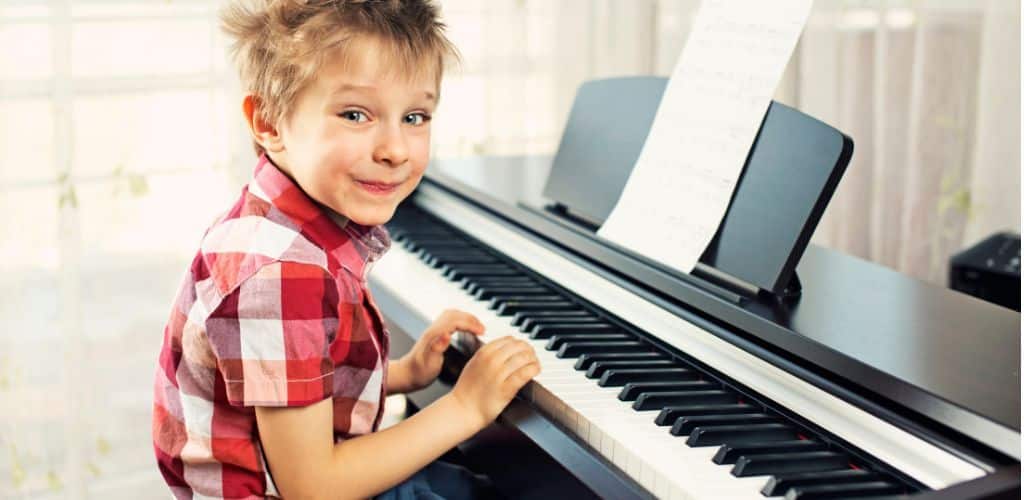
Digital pianos offer educational benefits, including features like the Yamaha Proprietary Education Suite that serve as a virtual piano teacher, assisting beginners in improving their skills.
Casio Keyboards are renowned for their resilience and innovative features. Their Privia series impresses with solid build quality and textured keys, offering a great touch.
Yamaha Keyboards, on the other hand, often win accolades for their robust action mechanisms, like the GH3, which provide lighter yet responsive play.
This article will explore these nuances and help you decide which brand is the ideal fit for your musical journey.
So, are you ready to discover the perfect keyboard for you? Keep reading!
Choosing Between
Casio and Yamaha
Deciding between Casio and Yamaha keyboards can be quite the puzzle, especially with the fantastic features each offers. Whether it’s budget considerations, unique technologies, or build quality, both brands have their charm.

Price and Affordability
Budget Considerations: I can’t stress enough how much setting a budget can simplify your buying process. Yamaha often targets the mid to high-end market, while Casio has a broader range of affordable models.
Value for Money: Casio often shines in offering value-packed features at lower prices, making it ideal for beginners. Yamaha’s pricing frequently reflects its premium quality and rich features, appealing more to seasoned players.
Key Features and Technology
Innovative Systems: Yamaha and Casio both love to wow audiences with technology. Yamaha’s Advanced Wave Memory and Graded Hammer Standard action provide a realistic playing experience.
Learning Tools: Casio’s Step-Up Lesson System can be a big draw for learners with its structured guidance. Yamaha offers the engaging duo mode for shared experiences with teachers or partners, effectively serving as a virtual piano teacher for beginners.
Design and Build Quality
Aesthetic Appeal: Both brands strive for elegance in design. Yamaha takes the cake with its sleek lines and timeless designs, while Casio offers fun and modern aesthetics.
Durability and Build: Yamaha is often praised for its robust build and long-lasting materials, making it a worthwhile investment. Casio doesn’t lag; its innovative Tri-Sensor Scaled Hammer Action ensures a durable yet sensitive key action.
I find both brands excel in different areas, and your choice might revolve around what you prioritize. For those focused on budget, Casio provides exciting options, whereas if premium build and sound quality speak to you, Yamaha’s got you covered.
Standout Models and Features of Digital Pianos
There are key models and features from both Casio and Yamaha that stand out in the world of digital pianos. Each model offers unique abilities that cater to different needs and preferences.
Here’s a deeper look into what makes some of these models exceptional.
Casio Privia PX-160
Authentic Piano Experience: The Casio Privia PX-160 is an 88-key digital piano that aims to provide an authentic acoustic piano feel. It’s equipped with the Tri-Sensor Scaled Hammer Action II, which mimics the hammer movements in a concert grand. I find this feature particularly impressive for delivering a realistic playing experience.
Sound Quality: The PX-160 utilizes Casio’s AiR (Acoustic and intelligent Resonator) technology, ensuring rich and resonant sound quality. This model includes a grand piano tone with string resonance, giving a fuller sound that aspiring pianists will appreciate.
Casio Privia PX-160
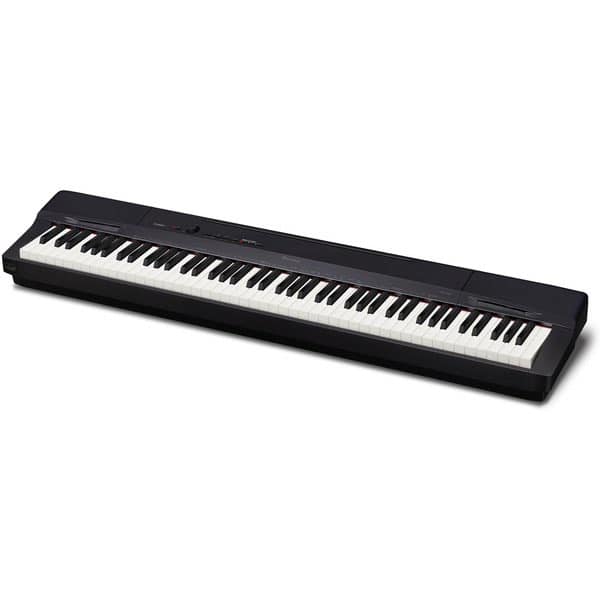
FEATURES: Tri-Sensor Scaled Hammer Action Keyboard II
OTHER INFO: Multi-dimensional Morphing AiR Sound Source
- Realistic key action
- Affordable price
- No LCD screen
When you click ‘Check Price’, you’ll see there are loads of great places to buy this item. Our personal favorite is Sweetwater for the US, and Thomann and Gear4Music for the UK & Europe.
They are the largest music retailers, with excellent customer service, competitive prices, really fast shipping, and the longest guarantees.
The professional musician who wrote this article combined many things,
from the product build, manufacturer’s reputation through to feedback
from other users, to create our famous TedScore™.
Yamaha P-Series
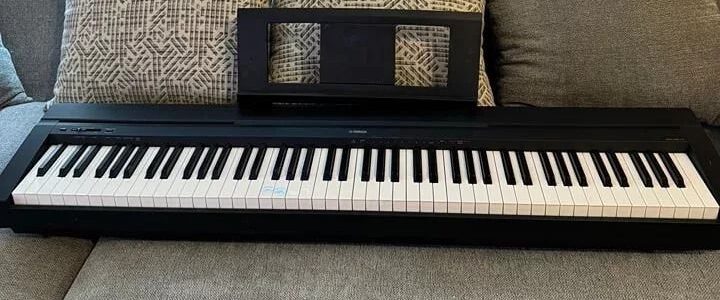
Compact Design with Realism: The Yamaha P-Series, including models like the P45 and P-125, is known for its balance of compact design and authentic feel. These models offer Graded Hammer Standard (GHS) weighted action, which replicates the heavier touch of the keys on a real piano’s lower end.
Sound Innovation: Yamaha’s Pure CF Sound Engine is a standout in most P-series models, providing high-quality audio. For instance, the P-125 boasts a two-way speaker system, projecting sound in multiple directions.
Yamaha P45 Digital Piano, Black
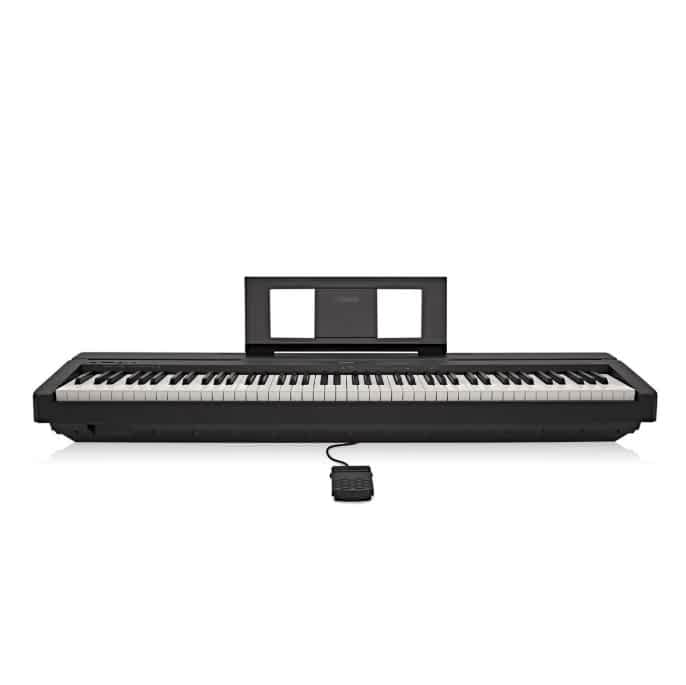
FEATURES: Tone Generation: AMW Stereo Sampling
OTHER INFO:Comes with Pedal/Footswitch, Music Rest, AC Adaptor
- Seamless mobility for gigs and practice sessions on the move
- Genuine piano feel with weighted keys and touch-sensitive response
- Diverse sound palette featuring 10 instrument options and adjustable reverb
- Intuitive control panel facilitates easy operation and sound selection
- USB connectivity enables MIDI transmission and software compatibility
- Built-in metronome for refining rhythm and timing skills
- Limited polyphony might pose constraints for intricate compositions
- Onboard speakers may lack power for larger performance venues
- Absence of built-in recording function necessitates external recording equipment
- Rear placement of headphone jack could be inconvenient for some users
When you click ‘Check Price’, you’ll see there are loads of great places to buy this item. Our personal favorite is Sweetwater for the US, and Thomann and Gear4Music for the UK & Europe.
They are the largest music retailers, with excellent customer service, competitive prices, really fast shipping, and the longest guarantees.
The professional musician who wrote this article combined many things,
from the product build, manufacturer’s reputation through to feedback
from other users, to create our famous TedScore™.
Yamaha P125 Digital Piano

PERFECT FOR: beginners
FEATURES: The keyboard has 88 weighted keys with Graded Hammer Standard (GHS) to make it feel like playing a real piano
OTHER INFO: Yamaha's Pure CF Sound Engine for high-quality sound reproduction
Yamaha P125 Digital Piano
- USB connectivity for easy integration with computers and other devices
- Versatile and portable design for practice and performance
- Wide range of voices and features for a customizable playing experience
- Built-in speakers and headphone jack for versatile listening options
- Higher price point compared to some other brands
- May not have as many advanced features as some professional-grade digital pianos
When you click ‘Check Price’, you’ll see there are loads of great places to buy this item. Our personal favorite is Sweetwater for the US, and Thomann and Gear4Music for the UK & Europe.
They are the largest music retailers, with excellent customer service, competitive prices, really fast shipping, and the longest guarantees.
The professional musician who wrote this article combined many things,
from the product build, manufacturer’s reputation through to feedback
from other users, to create our famous TedScore™.
Beginner-Friendly Options
Casio CTK-2550
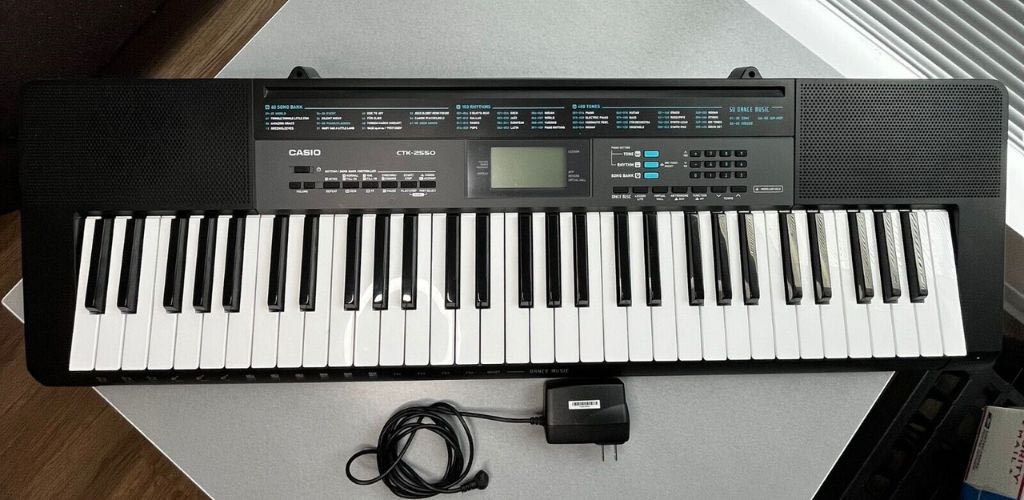
For beginners, the Casio CTK-2550 offers simplicity with its lighted keys to guide learning. It comes with Dance Music Mode, which any new player would find fun and interactive.
Casio CTK-2550
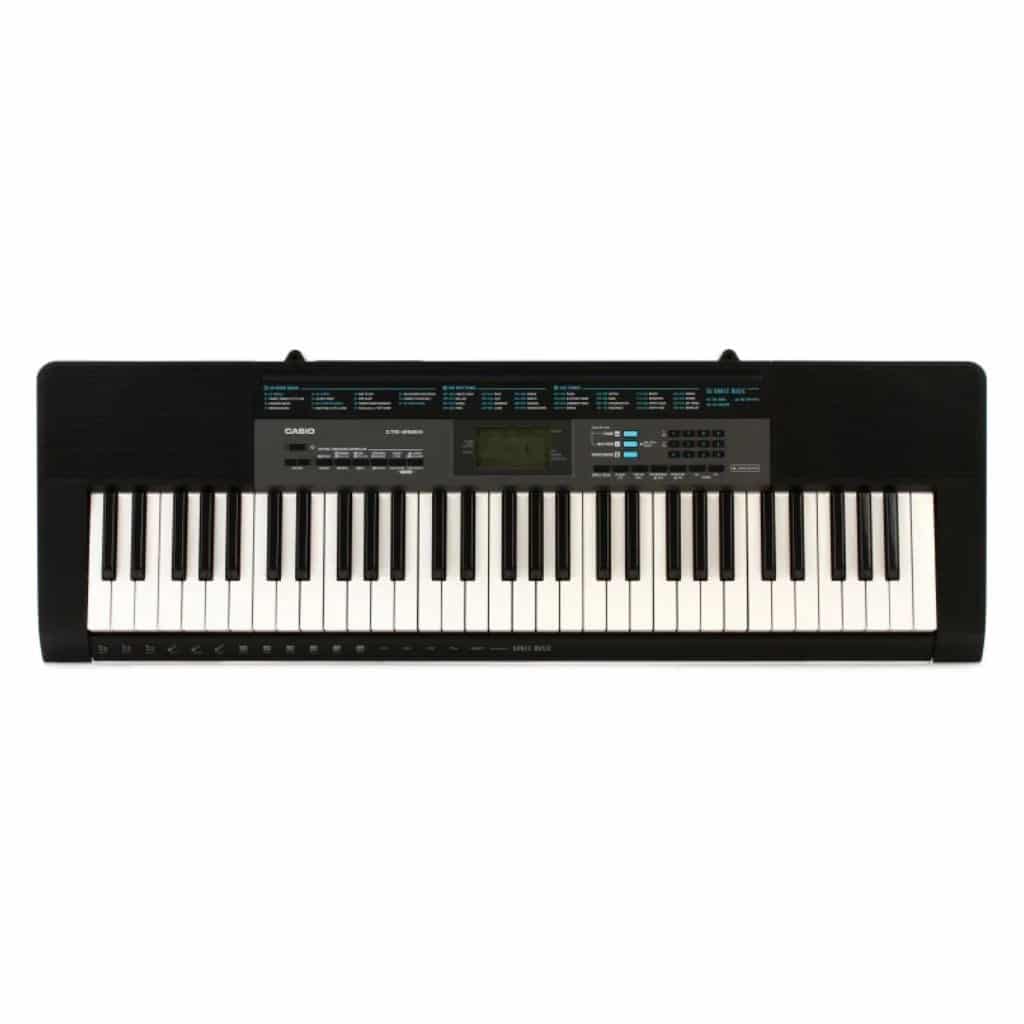
FEATURES: Built-in Dance Music Mode that includes 50 built-in dance music rhythms
OTHER INFO: Features a step-up lesson system that helps beginners learn to play
- Affordable entry-level keyboard
- Weighing just 7.5 pounds and featuring a compact design
- Limited polyphony
When you click ‘Check Price’, you’ll see there are loads of great places to buy this item. Our personal favorite is Sweetwater for the US, and Thomann and Gear4Music for the UK & Europe.
They are the largest music retailers, with excellent customer service, competitive prices, really fast shipping, and the longest guarantees.
The professional musician who wrote this article combined many things,
from the product build, manufacturer’s reputation through to feedback
from other users, to create our famous TedScore™.
Yamaha PSR E-263
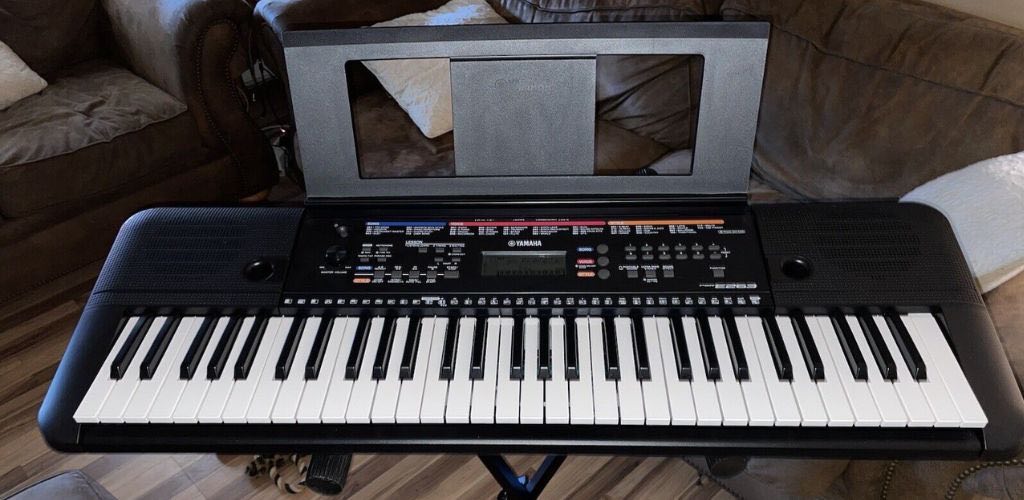
The Yamaha PSR E-263, with its Yamaha Education Suite, makes learning a step-by-step adventure. This feature helps those new to keyboards develop their skills incrementally, and I think it’s beneficial for self-paced learners eager to hone their skills without pressure.
Yamaha PSR E-263
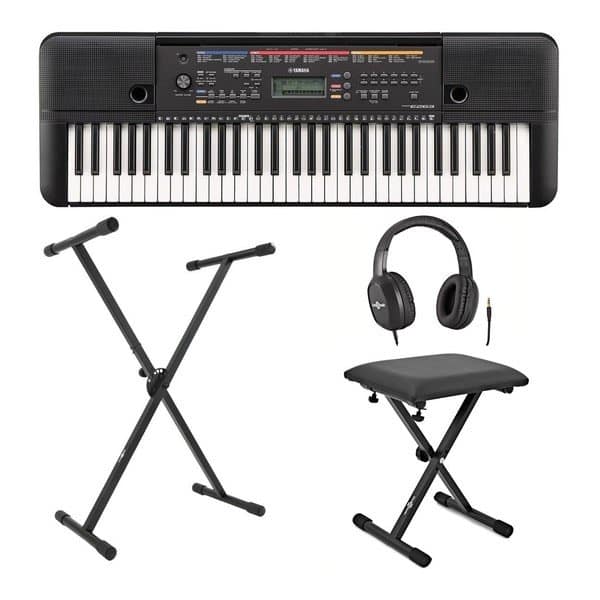
FEATURES: includes the Yamaha Education Suite which offers a set of learning tools and lessons
OTHER INFO: Has an aux line input that allows users to connect external audio devices
- Touch-sensitive keys
- Arpeggio function
- None
When you click ‘Check Price’, you’ll see there are loads of great places to buy this item. Our personal favorite is Sweetwater for the US, and Thomann and Gear4Music for the UK & Europe.
They are the largest music retailers, with excellent customer service, competitive prices, really fast shipping, and the longest guarantees.
The professional musician who wrote this article combined many things,
from the product build, manufacturer’s reputation through to feedback
from other users, to create our famous TedScore™.
Key Considerations for Keyboard Selection
When choosing between a Casio and Yamaha keyboard, it’s crucial to evaluate aspects such as sound quality, key action, and portability. Each factor is vital for finding the right instrument that suits your musical needs and preferences.
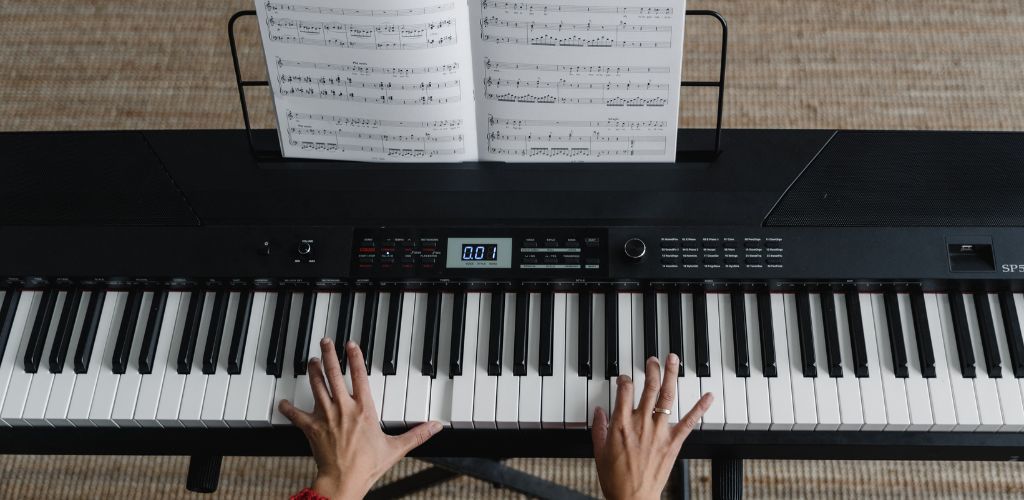
Sound Quality and Polyphony in Digital Pianos
Sound quality is a top priority for any keyboard player.
Yamaha is known for its AWM Stereo Sampling technology, which produces rich and realistic sounds. This offers a more immersive playing experience, especially if you’re after authentic piano tones.
Casio, on the other hand, provides impressive sound quality with its advanced sound engines.
Polyphony, the number of notes a keyboard can produce simultaneously, is another crucial aspect. A higher polyphony count allows for more complex pieces without note dropout.
Most Yamahas offer greater polyphony compared to Casio, providing a richer sound palette.
Key Action and Touch Sensitivity
Yamaha keyboards often feature weighted keys, offering a realistic piano feel with weighted action. This is perfect for those transitioning from an acoustic piano. Casio’s Tri-Sensor Scaled Hammer Action provides a similar experience, albeit slightly heavier in touch sensitivity.
When considering a Casio keyboard, it’s essential to evaluate the quality of the piano sounds, as they are designed to replicate the rich tones of acoustic pianos.
Many Casio keyboard models, such as the Privia series, offer realistic piano sounds and weighted keys, making them suitable for both beginners and experienced players alike.
Some Casio stage piano models are also popular among gigging musicians due to their portability and impressive sound quality, while other keyboard models are often recommended by piano teachers for their affordability and educational features.
Both brands offer models with adjustable sensitivity, letting you tailor responsiveness to your playing style. It’s essential to try out both to see which feels best under your fingers.
Portability and Accessibility
Portability is as crucial as sound when choosing your keyboard.
Casio models are generally known for being lighter and more compact, especially their portable keyboards. This makes them a great option if you frequently move your instrument or have limited space.
Yamaha, while slightly heavier, often offers more features packed into their models, which can enhance your playing experience. Accessibility features, like an intuitive interface, are found on both brands. Choose based on how and where you’ll be playing most.
Digital Pianos under $1000
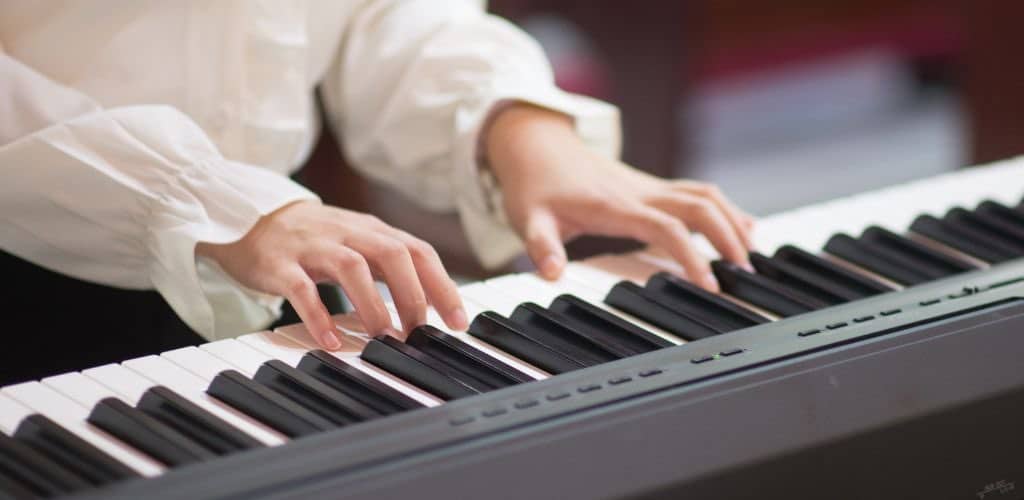
When it comes to digital pianos under $1000, both Yamaha and Casio offer a range of options that cater to different needs and preferences. Yamaha’s P-125 and Casio’s Privia PX-870 are two popular options in this price range.
The Yamaha P-125 features 88 weighted keys, 24 built-in sounds, and a range of connectivity options, including USB and audio output.
The Casio Privia PX-870, on the other hand, boasts 88 weighted keys, 19 built-in sounds, and a range of features such as layering and splitting.
Brand Insights
Brand Reputation and Catalogue Variety
Yamaha and Casio are two of the most well-established brands in the music industry, with a reputation for producing high-quality instruments.
Yamaha has a slightly larger catalogue of digital pianos, with a range of options that cater to different needs and budgets.
Casio, on the other hand, has a more focused range of digital pianos, but is known for its innovative features and affordable prices.
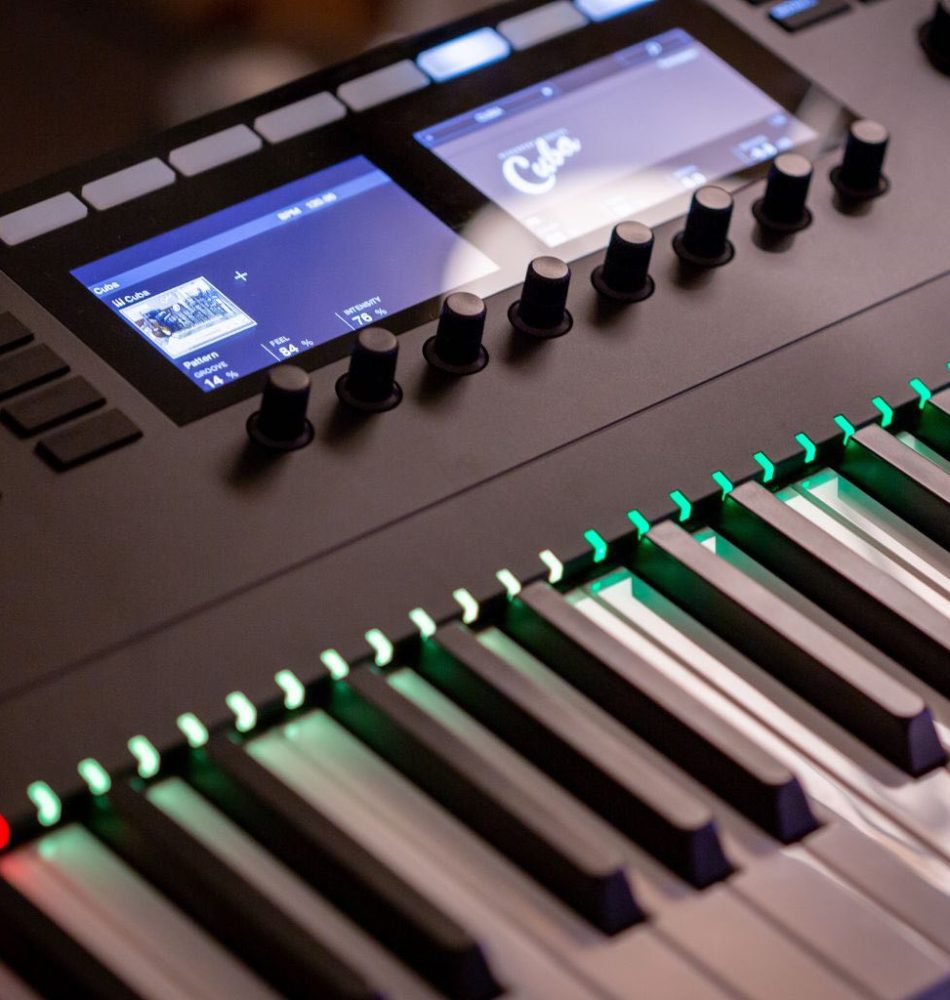
Studio and Home Use
Both Yamaha and Casio offer digital pianos that are suitable for studio and home use. Yamaha’s YPG-535 is a popular option for home use, with its range of built-in sounds and features such as layering and splitting.
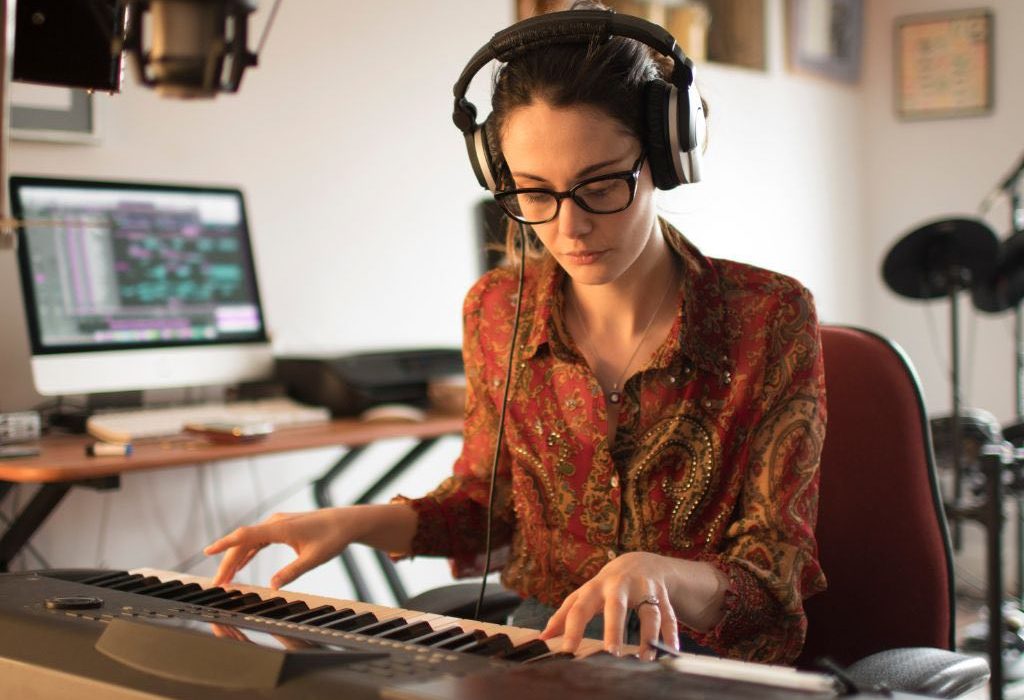
Casio’s Privia PX-360 is another popular option, with its range of built-in sounds and features such as audio output and USB connectivity.
When it comes to studio use, Yamaha’s P-125 is a popular option, with its range of built-in sounds and features such as MIDI connectivity and audio output.
Recap:
Casio or Yamaha Keyboard
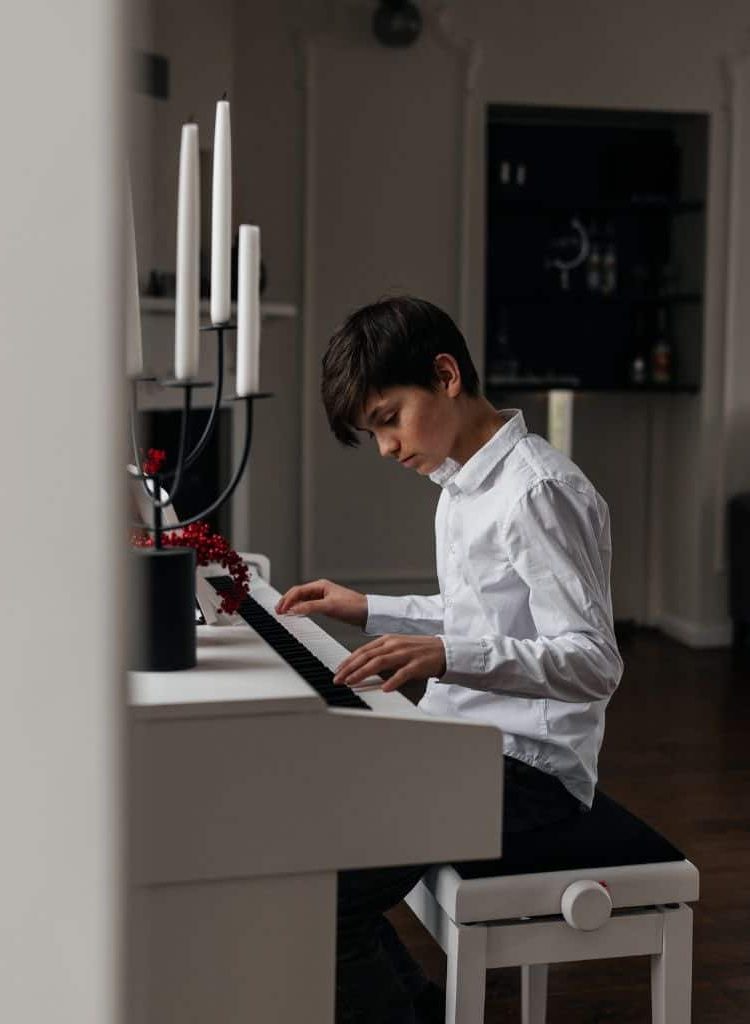
Both Casio and Yamaha keyboards offer a range of features and benefits that cater to the needs of various users, from beginners to more experienced players.
While Casio keyboards are often praised for their affordability and beginner-friendly features, Yamaha keyboards are known for their touch-sensitive keys and comprehensive learning tools.
Ultimately, the decision between a Casio or Yamaha keyboard comes down to individual preferences, budget, and the specific features that are most important to the user.
Regardless of the brand chosen, both Casio and Yamaha have a long-standing reputation for producing high-quality, reliable instruments that can provide years of musical enjoyment and growth.
By carefully considering your needs and comparing the features of each brand, you can make an informed decision and find the perfect keyboard to suit your musical journey.
Keep reading…
Discover the best digital piano cover to safeguard your instrument and maintain its pristine condition for years to come.
FAQ's
Both Yamaha and Casio offer high-quality digital pianos, and the best choice depends on your specific needs, preferences, and budget.
The best musical keyboard brand depends on individual needs and preferences, but Yamaha, Casio, Roland, and Korg are among the most respected and well-known brands in the industry.
Yamaha is widely regarded as one of the top keyboard manufacturers, known for producing high-quality, reliable instruments suitable for beginners and professionals alike.
Yes, Casio keyboards are good, offering a wide range of affordable, versatile, and user-friendly options for beginners and experienced players alike.


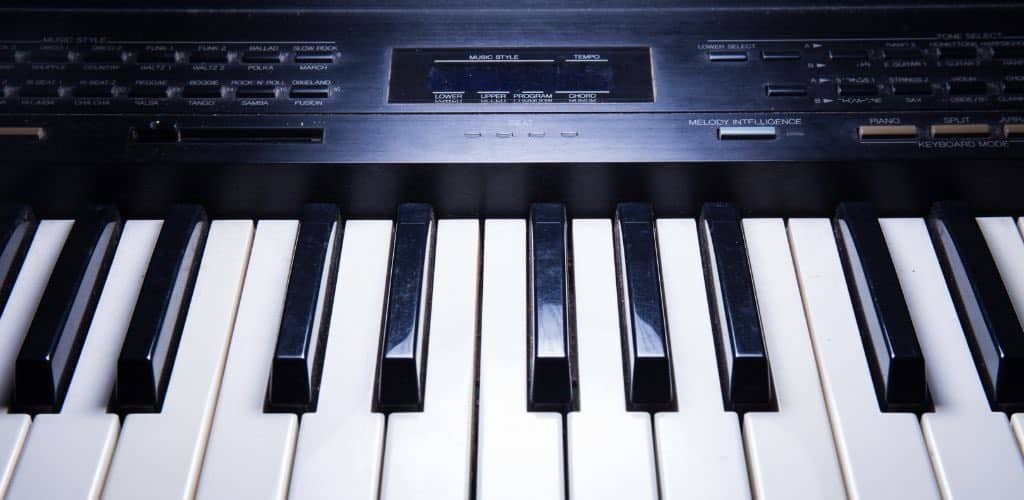








Interesting points on design and build quality. However, I think the durability of a keyboard goes beyond just the build; it’s also about the brand’s history of reliable products. In my experience, Yamaha tends to last longer, even though Casio offers some appealing features at lower price points. Would be curious to see a deeper dive into long-term reliability and customer satisfaction between the two brands. Does anyone else feel the same or had a different experience?
Finally, a clear comparison between Casio and Yamaha digital pianos. I always struggled to understand the key differences in terms of sound quality and key action. This outline simplifies everything beautifully. I’m leaning towards the Yamaha P-Series for its sound engine. Thanks for breaking it down!
Just don’t spill your coffee on it like I did lol
Yamaha P-Series is a solid choice! The sound is unbeatable for that price range.
Hey Robert Emery, got any tips on which model’s easier for a kid to start with? Looking at your beginner-friendly section but just wondering if the Casio CTK-2550 or Yamaha PSR E-263 has better learning aids for kids. Cheers!